5 Self-Exams You Can Do at Home Right Now
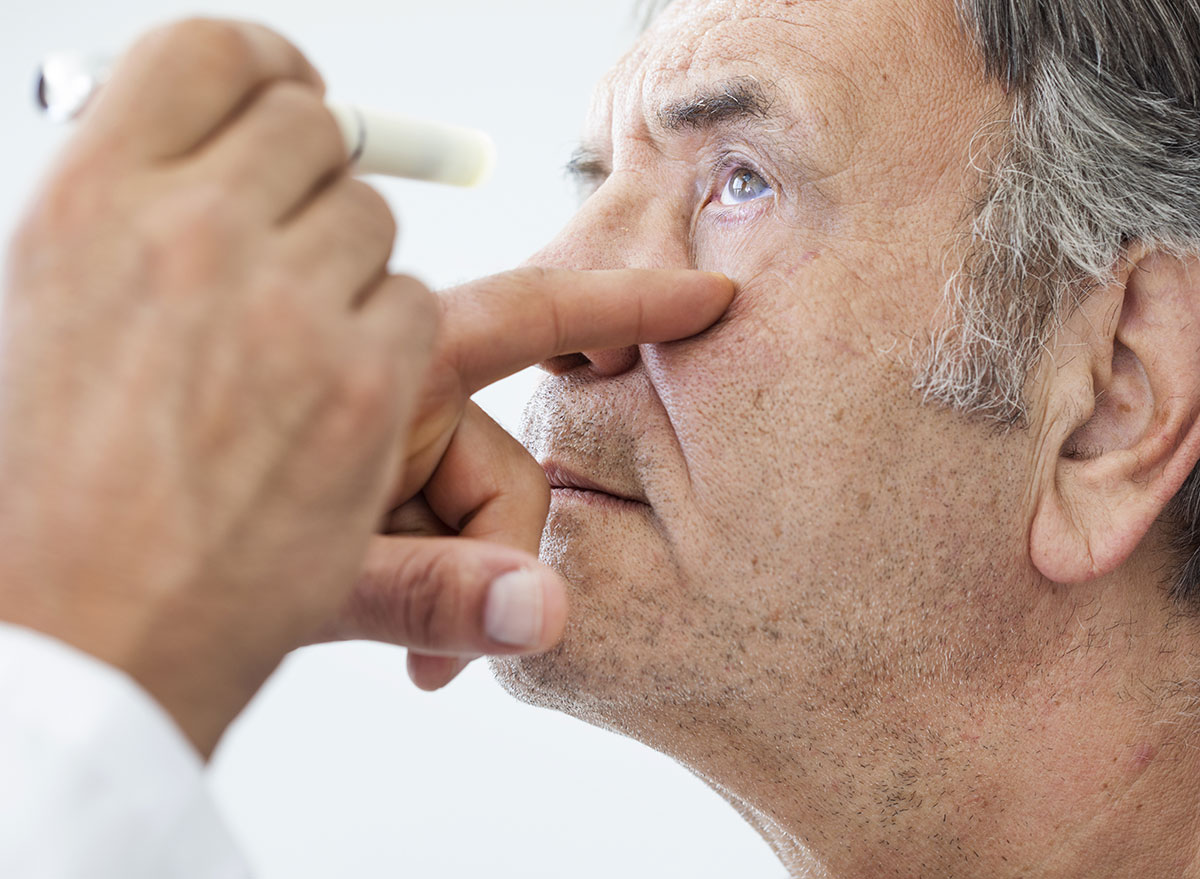
It's important to go to the doctor for a regular checkup. But even those of us who are diligent about our appointments will go months without being looked at by a medical professional. To fill the gap and ensure your health is being monitored on an ongoing basis, you have to rely on the person who knows your body best: You.
Self-exams are a valuable supplement to professional checkups, helping you keep an eye on anything out of the ordinary that could turn into a bigger issue in the future. Whether it's spotting skin cancer early or ensuring your gums are healthy, there are some simple self-exams you can conduct to make sure you're healthy, and that you stay that way.
Check skin for moles or spots
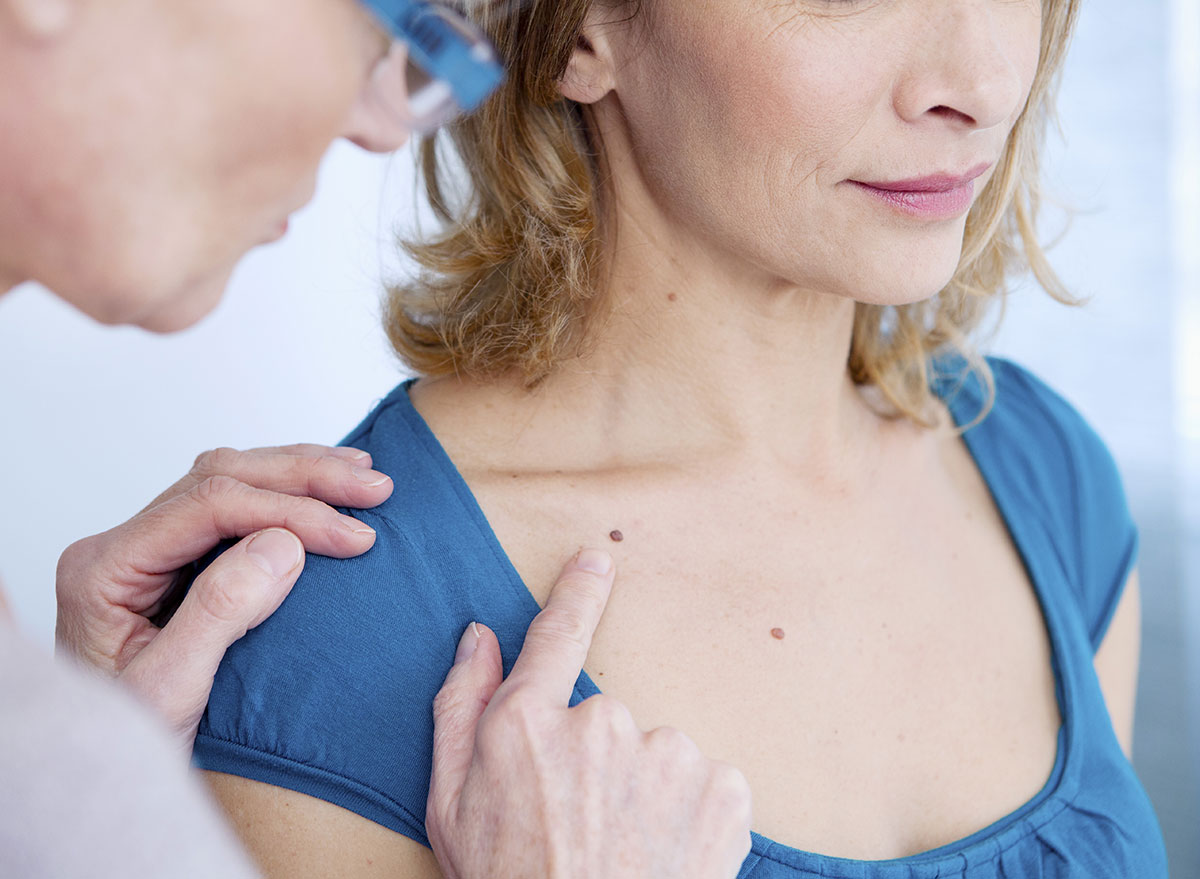
Checking for unusual moles or spots is one of the simplest self-exams one can do, but involves more than simply looking in the mirror (though that's a good start).
"It is very important to check for moles or lesions that change in color, shape or become irregular in size or start to bleed," says Dr. Alain Michon, MD, medical director at Ottawa Skin Clinic. "For some reason, many people decide to neglect these signs, which is a terrible mistake."
He recommends that those doing the exam look themselves over in a full-length mirror from head to toe, ensuring there is plenty of light, and seeking out anything that is new or unusual. This can include a mole that increases in size or changes color or texture, a spot that hurts or itches over time, or an open sore that does not heal.
The Skin Cancer Foundation offers a helpful guide to conducting a self-exam for moles, which urges that you not only look at the obvious, visible areas, but check areas you might not look at after your average shower—under your arm, or on your scalp (using a blow-dryer to separate your hair). It also offers a useful list of the ABCDE warning signs for melanoma (Asymmetry, Border, Color, Diameter, and Evolving).
"If you have a roommate or a partner, ask them to check your back, the top of your head and behind your ears—these are all areas that are often missed," he suggests. "If you do find one, I suggest consulting with your general practitioner for a medical assessment and skin biopsy if deemed necessary." (Related: Check out these 7 Worst "Healthy" Foods You're Eating, According to a Dietitian.)
Breast self-exam
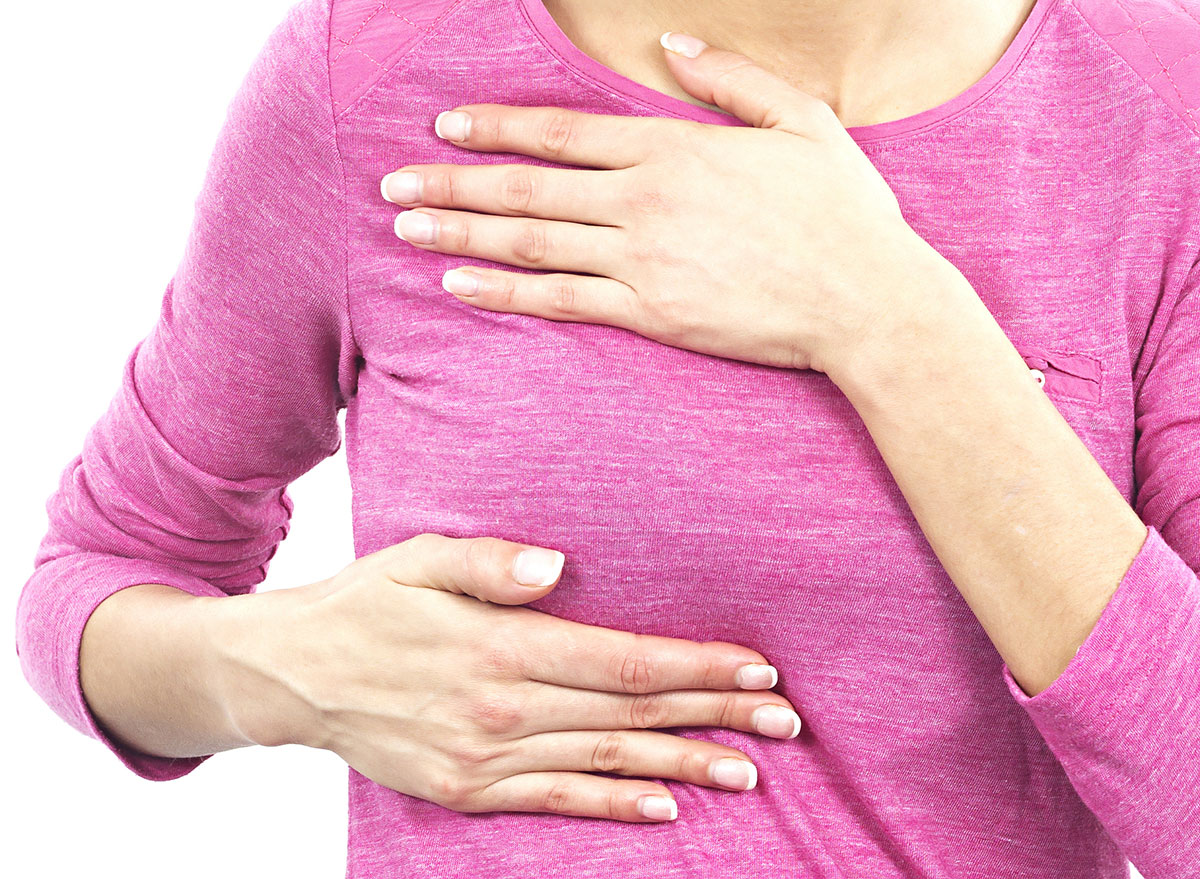
Regularly checking for lumps on one's breasts can be an effective way to detect breast cancer early on. Though it should just be one practice, done in combination with regular screenings by professionals, it's a simple habit that can prove beneficial to one's health.
"The person needs to know that they are feeling for something hard very hard like the knuckle of a fisted hand; and regular breast tissue feels thick like the tissue between the thumb and the index finger," says Enchanta Jenkins, MD, MHA, who runs Ellehcal OBGYN in San Diego, and recommends people conduct a self-exam monthly.
Breastcancer.org offers a detailed five-step process for conducting a self-exam of one's breasts:
- Step 1: Look at your breasts in the mirror for any unusual swelling, dimpling, or redness.
- Step 2: Raise your arms and look for those same changes.
- Step 3: Look for fluid coming out of one or both nipples. "Discharge from the nipple or skin of the breast can be a sign of cancer," says Jenkins.
- Step 4: Lay down and feel your breasts for any lumps. Using a few fingers of your right hand, move in a circular motion over your left breast, from top to bottom and side to side, then switch hands and breasts and repeat.
- Step 5: Feel your breasts for any lumps while standing or sitting, following the process described in Step 4.
"Remember: if you notice anything, go to the doctor," says Jenkins. "Don't panic but don't delay." (Related: Here are the 100 Worst Foods Linked to Cancer.)
Testicular self-examination
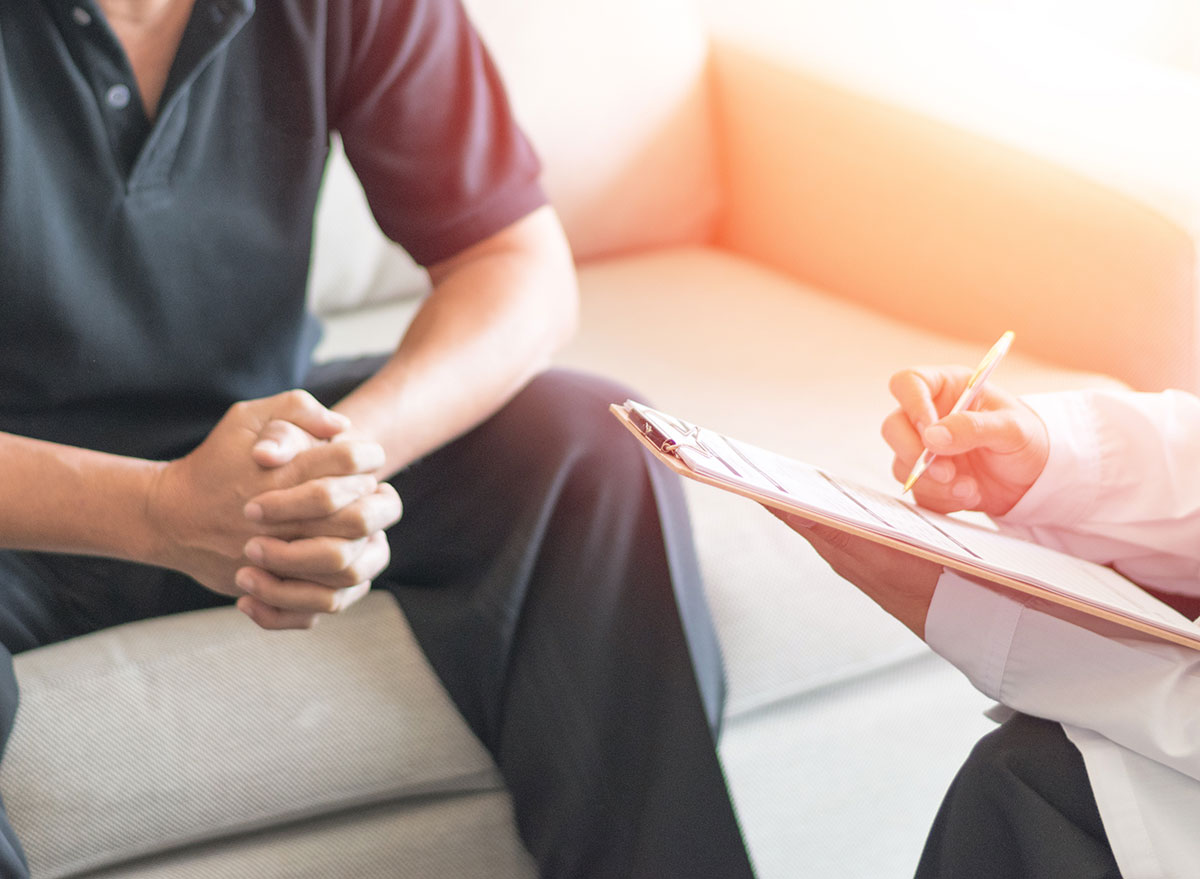
Just as women should be doing a breast self-exam each month, men should be doing a testicular self-exam just as often. Testicular cancer is the most common form of cancer in men between the ages of 20 and 40—but can be cured if caught early.
"I suggest the exam be conducted once a month usually in the shower or just after a shower when there is relaxation of the scrotum making it very easy to access the testicles," says Neil H. Baum, MD, professor of clinical urology at Tulane Medical School in New Orleans.
Baum has published this step-by-step guide to the self-exam in the April 1996 issue of Hospital Medicine. It suggests the following steps:
- Use both hands to examine each testicle, one at a time, holding the testicle between the fingers and thumb.
- Using gentle pressure, roll the testicle between thumb and fingers (this should cause no pain or discomfort).
- Feel for small lumps or irregularities that feels different than the spongy texture of a healthy testicle.
"The normal testicle is smooth and soft without any irregularities," says Baum. "Any lumps or bumps or irregularities should be brought to the attention of the doctor. Not all lumps and bumps are cancer but do require additional testing." (Related: Here are The 50 Best Foods for Men.)
Eye Health
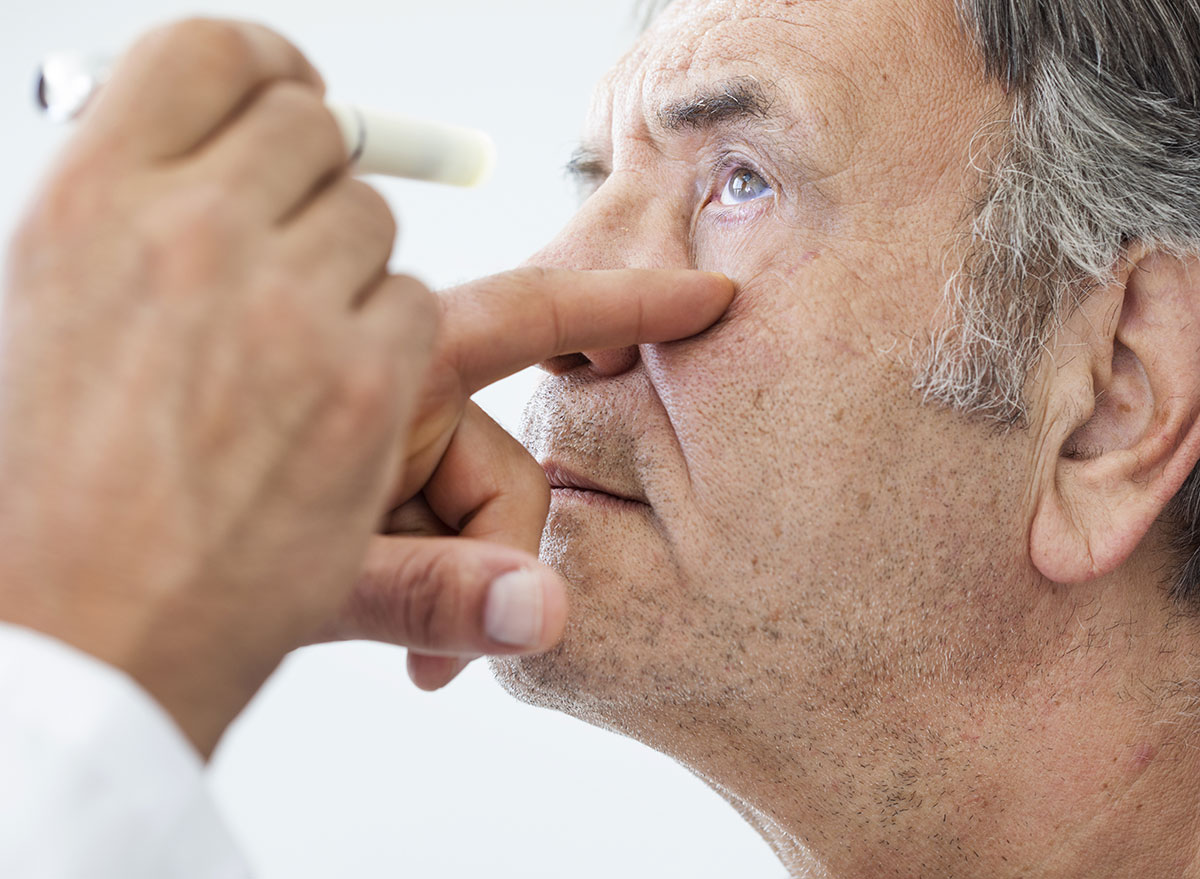
You might think that checking your eyesight is something you are doing constantly throughout the day. Whether reading a book or trying to make out a sign two blocks away you are constantly aware of how well your vision is functioning and would know immediately if something was off, right? Not necessarily.
Yuna Rapoport, MD, MPH, the founder and director of Manhattan Eye, a vision clinic based in New York City, suggests conducting a few basic evaluations of your vision and eye health at home on a regular basis—and they don't even require one of those eye charts with letters of different sizes.
"To assess your vision, look at three different locations: far off in the distance, then computer distance, and up near," she says. "If either of those is not totally clear, even after blinking several times, it may be time to get an updated (or new) pair of glasses or contacts."
This might seem obvious, but often people will go months or even years without realizing their sight at one of those distances is not as sharp as they expect it to be. Taking a minute to focus on this can help you identify whether there is an issue early.
Beyond your vision itself, you can also do a self-exam of your general ocular health, including whether your eyes are dry or uncomfortable in some other way.
"If your eyes burn or feel gritty after reading on the computer, you likely have dry eye," says Rapoport. "This is easily treated with preservative free artificial tears." By simply checking in on the symptoms, you can do a self-check on the health of your eyes. (Related: Here are the 11 New Coronavirus Symptoms You Need to Know About.)
Dental check
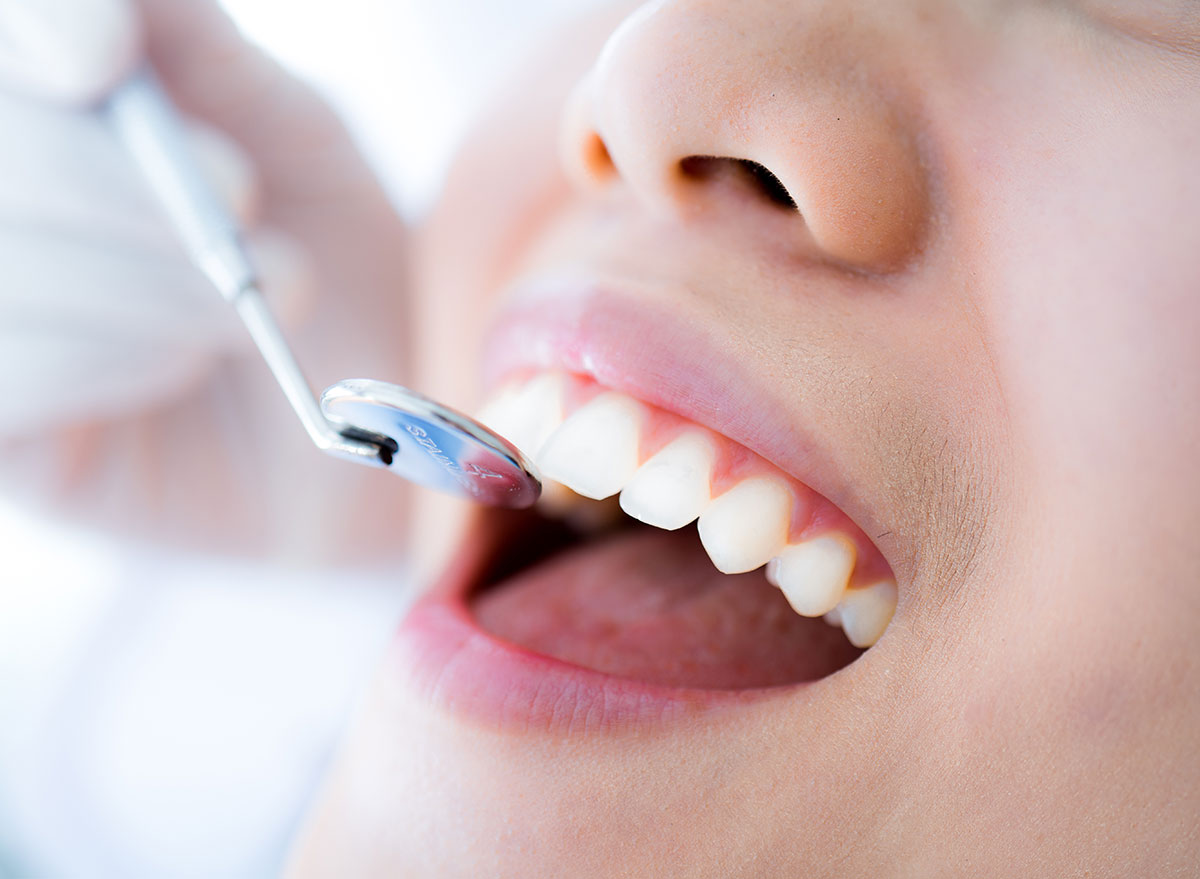
Like your eyes, you probably imagine that you are conducting a dental check every day—after all, you're brushing and flossing regularly, right? But even if you're using a fancy electric toothbrush, when was the last time you stopped and took a really good look at your mouth?
Pia Lieb DDS, founder of Cosmetic Dentistry Center NYC, based in New York City, offers these simple steps that every person should add to their brushing and flossing routine:
- Check your teeth: See if anything looks discolored, cracked, or if a filling is lost. "All of this will be visible to your eyes," she says.
- Scan your gums: "Are they swollen? Red? Bleeding when you brush? Do they hurt to the touch? This is another thing you can share with your dentist," according to Lieb.
- Give your tongue a look: "Does it look extra red? Have any White spots? Unusual textures?" If so, Lieb suggests that you take a photo and send it to your dentist.
For more, check out these worst foods to eat for your immune system.








